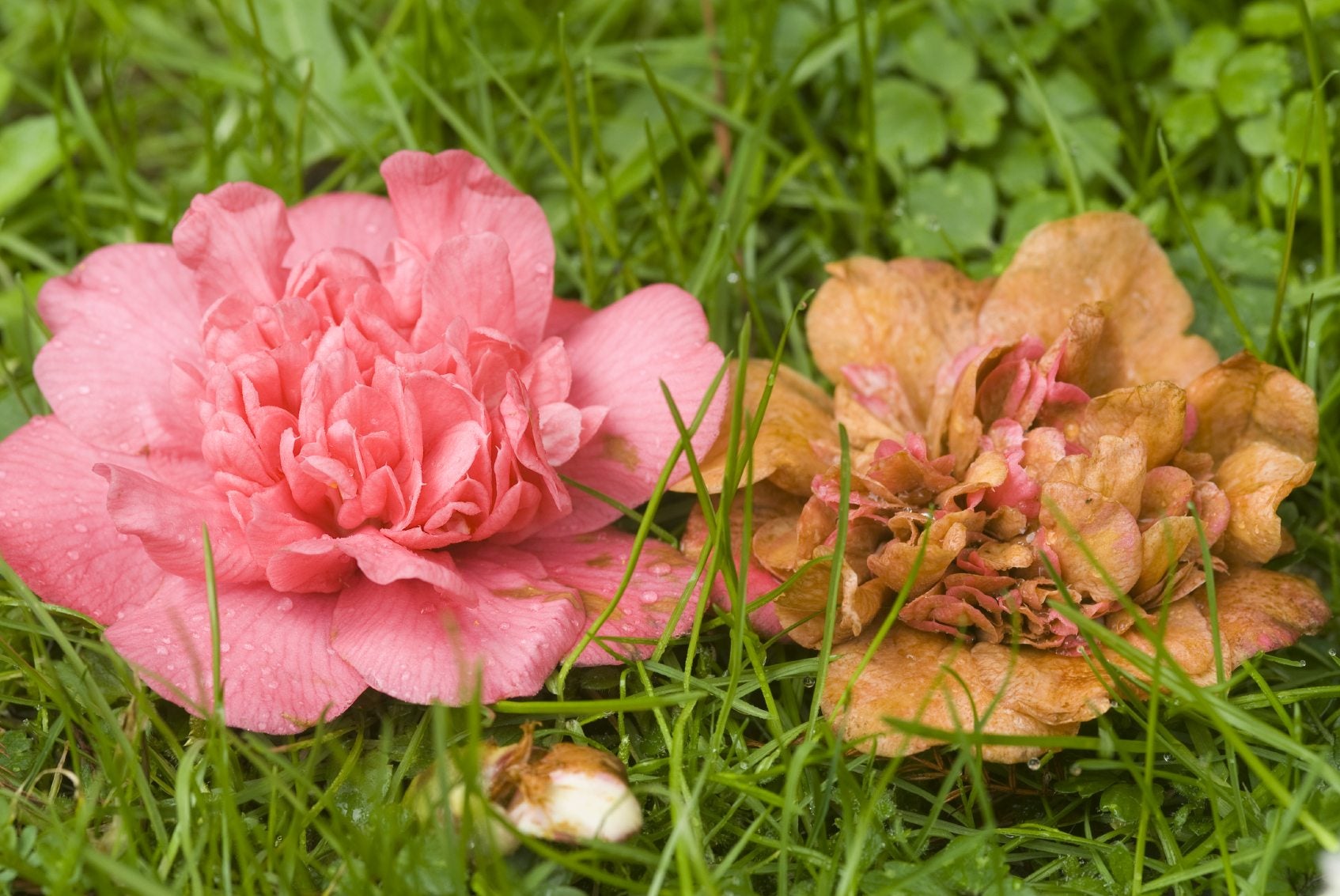Identifying And Fixing Problems With Camellias


Even under the best of circumstances, problems with camellias can and do occur. However, learning how to identify and fix common camellia problems before they become an issue is the best solution.
Common Camellia Problems
Several diseases affect camellia plants. The most common include petal blight, canker, leaf gall, root rot, and camellia yellow mottle leaf virus.
- Petal blight affects camellia flowers, causing them to turn brown. This fungal disease generally occurs in spring and is usually due to abundant moisture. Petals develop small, brown spots that quickly enlarge until the entire bloom has browned. The infected flowers will usually drop within one to two days. Dark brown veins in the petals are a good indication that a camellia plant is suffering from petal blight. Pull off and dispose of infected flowers and treat with a foliar fungicide every one to two weeks.
- Canker disease can be identified by the sudden wilting of branches along with gray-colored blotches. The infected bark usually splits open, giving way to pinkish cankers. Branch tips may also die back. Once infected, prune and destroy cankerous branches, cutting several inches (5 to 15 cm.) below the affected area. Planting camellias in well-drained soil usually helps prevent canker. Spraying with fungicide may also help.
- Leaf gall, or Oedema, is often the result of fungus due to overly moist conditions. Leaves become enlarged and fleshy with small, greenish-white galls on the undersides. These eventually turn brown or rust-colored. Remove affected leaves and spray with fungicide. Reduce watering and when planting camellias, avoid overcrowding.
- Root rot is a fungal disease causing leaf yellowing, poor growth, and wilting followed by imminent death. Rather than healthy, white roots, affected plants exhibit brown root systems. Root rot often results from overwatering or poor drainage. Prevention is key to avoiding this problem.
- Camellia yellow mottle leaf virus causes irregular yellow patterns or mottling on camellia leaves. Leaves may eventually turn completely yellow. There is no cure for camellia yellow mottle; therefore, prevention is important. As this virus is transmitted through infected stock, make sure camellia plants are obtained only through healthy plants.
Other Problems with Camellias
Other problems affecting camellia plants include pests and physiological disorders such as scale, camellia brown leaf, and bud drop.
- Scale bugs are the most serious pest that attacks camellia plants. These tiny insects attach to the undersides of leaves, which may be cottony in nature. Plants may become yellow, have fewer blooms, drop leaves, and even die. Handpicking can alleviate small infestations; however, the use of horticultural oil is often recommended to smother scale and their eggs.
- Camellia brown leaf or sunscald is the result of too much direct sunlight. Scorched or brown leaves on camellia plants do not usually recover. Avoid planting in direct sun. If necessary, transplant to a shadier location.
- Bud drop occurs when plants receive too much or too little water, insufficient light, or extremely cold temperatures. They may also suffer from nutrient deficiencies or mite problems. Unopened buds typically drop off plants prior to blooming and may turn brown.
- Sooty mold is common in summer and fall. Often the result of sucking insects, like aphids and scale, the black-coated leaves will eventually drop.
Sign up for the Gardening Know How newsletter today and receive a free copy of our e-book "How to Grow Delicious Tomatoes".

Nikki Tilley has been gardening for nearly three decades. The former Senior Editor and Archivist of Gardening Know How, Nikki has also authored six gardening books.